 This notion is further discussed by Marbodus, Bishop of Rennes, in his writings from the 11th Century. There, he declares that
This notion is further discussed by Marbodus, Bishop of Rennes, in his writings from the 11th Century. There, he declares that ![]() agate makes its wearer more friendly and persuasive, and also blesses them with god's favor. Other virtues of the agate, written about by Camillo Leonardo, are that the stones endow the owner with strength and guards them against storms.
agate makes its wearer more friendly and persuasive, and also blesses them with god's favor. Other virtues of the agate, written about by Camillo Leonardo, are that the stones endow the owner with strength and guards them against storms.
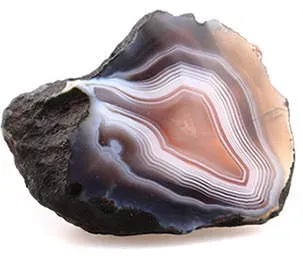 Agate possessed great virtues; its wearer would be guarded against all kinds of danger and released from the curse of materialism, which became the secret of his success. Some of these
Agate possessed great virtues; its wearer would be guarded against all kinds of danger and released from the curse of materialism, which became the secret of his success. Some of these ![]() agate stones were all black with white veins; while others were entirely white.
agate stones were all black with white veins; while others were entirely white.
 Wearing
Wearing ![]() agate was believed to be a cure for insomnia and nightmares. However in spite of these positive attributes, Cardano wrote that while wearing the stone, he experienced a high amount of misfortunes which were no fault of his own. He then stopped wearing agate. Cardano tested different stones by actually wearing them and seeing how the results would affect his life. However, he failed to appreciate the fact that there was no proof of the connection between the events in his life and the wearing of the stones. In another one of his articles, Cardano takes a more sympathetic look at agate and claims that all different kinds of the stone render those who wear them "temperate, continent, and cautious; therefore, they are all useful for acquiring riches."""
agate was believed to be a cure for insomnia and nightmares. However in spite of these positive attributes, Cardano wrote that while wearing the stone, he experienced a high amount of misfortunes which were no fault of his own. He then stopped wearing agate. Cardano tested different stones by actually wearing them and seeing how the results would affect his life. However, he failed to appreciate the fact that there was no proof of the connection between the events in his life and the wearing of the stones. In another one of his articles, Cardano takes a more sympathetic look at agate and claims that all different kinds of the stone render those who wear them "temperate, continent, and cautious; therefore, they are all useful for acquiring riches."""
 According to a text published in Vienna in 1709, the attractive qualities of the coral-
According to a text published in Vienna in 1709, the attractive qualities of the coral-![]() agate were to be used in an air-ship- an invention of a Brazilian priest. In the air vessel, over the head of the pilot was a network of iron, on which large pieces of coral-agate were attached. The priest believed the stones would help in raising the ship when they would acquire magic power through the heat of the sun's rays. The main lifting force for the ship was provided by strong magnets enclosed in two metal spheres. How the magnets themselves were raised, was not explained.
agate were to be used in an air-ship- an invention of a Brazilian priest. In the air vessel, over the head of the pilot was a network of iron, on which large pieces of coral-agate were attached. The priest believed the stones would help in raising the ship when they would acquire magic power through the heat of the sun's rays. The main lifting force for the ship was provided by strong magnets enclosed in two metal spheres. How the magnets themselves were raised, was not explained.
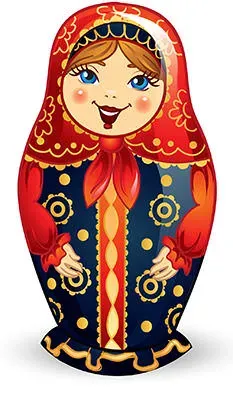 There are a few talismanic stones which have gained a high reputation, and one of these is the alexandrite, a variety of chrysoberyl. This gemstone is found in Russia, in the
There are a few talismanic stones which have gained a high reputation, and one of these is the alexandrite, a variety of chrysoberyl. This gemstone is found in Russia, in the ![]() emerald mines on the Takowaya, in the Ural region. Supposedly the name of the stone came from the fact that it was discovered on the same day that Alexander II reached his majority in 1831. It was Nordensjold, a mineralogist, who gave the stone this name. Alexandrite, when found in gem form, rarely weighs over three carats. The gemstone is characterized by a pleochroism of a beautiful green color which changes into a splendid red color under different forms of light. In Ceylon, bigger pieces of alexandrite are found, some weighing 60 carats each. Even there, however, it is rare to find stones of over one to two carats. In Ceylon, the alexandrite found is also of a darker green color. As red and green are the national colors of Russia, alexandrite is a favorite among the Russian people and is looked upon as a stone of good omen.
emerald mines on the Takowaya, in the Ural region. Supposedly the name of the stone came from the fact that it was discovered on the same day that Alexander II reached his majority in 1831. It was Nordensjold, a mineralogist, who gave the stone this name. Alexandrite, when found in gem form, rarely weighs over three carats. The gemstone is characterized by a pleochroism of a beautiful green color which changes into a splendid red color under different forms of light. In Ceylon, bigger pieces of alexandrite are found, some weighing 60 carats each. Even there, however, it is rare to find stones of over one to two carats. In Ceylon, the alexandrite found is also of a darker green color. As red and green are the national colors of Russia, alexandrite is a favorite among the Russian people and is looked upon as a stone of good omen.
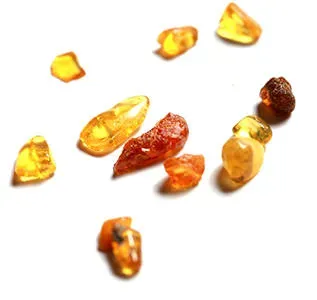 Amber was one of the first substances used by man for decoration. It was also used early on for amulets and medical reasons. Rough, shapeless pieces of
Amber was one of the first substances used by man for decoration. It was also used early on for amulets and medical reasons. Rough, shapeless pieces of ![]() amber have been found in Prussia and Denmark in deposits of the Stone Age. These pieces all have circular depressions on them. These depressions are regularly in patterns and at other times not in any patterns ar all. These patterns seem intended to imitate similar patterns found in large stones and rocks. These patterns are often the work of a man's hand, but can also be caused by nature. In Hoernes' opinion, these stones marked the resting place of the spirits that were thought to live in the stones, so it is probable that the amber fragments were used as talismans or amulets.
amber have been found in Prussia and Denmark in deposits of the Stone Age. These pieces all have circular depressions on them. These depressions are regularly in patterns and at other times not in any patterns ar all. These patterns seem intended to imitate similar patterns found in large stones and rocks. These patterns are often the work of a man's hand, but can also be caused by nature. In Hoernes' opinion, these stones marked the resting place of the spirits that were thought to live in the stones, so it is probable that the amber fragments were used as talismans or amulets.
 In ancient Greek poetry, grains of
In ancient Greek poetry, grains of ![]() amber are a metaphor for the tears shed every year over the death of Phaethon. Grief had turned the amber into poplar plants that grew on the banks of the Eridanus. In a lost tragedy, Sophocles saw the origin of amber as being caused by the death of Meleager. The amber was the Indian birds' tears as they cried over his passing. For Nicias, amber was "the juice or essence of the brilliant rays of the setting sun, congealed in the sea and then cast up upon the shore."" Another description compared amber to resin and regarded it as being discharge from certain trees. Another author wrote that amber was the solidified urine of the lynx, which brought about one of the names of amber, ""lyncurius."" Because amber was very easy to carve and was used for many different items, and because of its beautiful yellow color and brilliance, it became a popular trading item between the people of the Baltic Coast and the more civilized people in the south. Schliemann found a large amount of amber from the Baltic in the graves of Mycenae, and there are many references to the stone in the works of Latin authors from the first and succeeding centuries that testify to its popularity in the Roman world."
amber are a metaphor for the tears shed every year over the death of Phaethon. Grief had turned the amber into poplar plants that grew on the banks of the Eridanus. In a lost tragedy, Sophocles saw the origin of amber as being caused by the death of Meleager. The amber was the Indian birds' tears as they cried over his passing. For Nicias, amber was "the juice or essence of the brilliant rays of the setting sun, congealed in the sea and then cast up upon the shore."" Another description compared amber to resin and regarded it as being discharge from certain trees. Another author wrote that amber was the solidified urine of the lynx, which brought about one of the names of amber, ""lyncurius."" Because amber was very easy to carve and was used for many different items, and because of its beautiful yellow color and brilliance, it became a popular trading item between the people of the Baltic Coast and the more civilized people in the south. Schliemann found a large amount of amber from the Baltic in the graves of Mycenae, and there are many references to the stone in the works of Latin authors from the first and succeeding centuries that testify to its popularity in the Roman world."
 In Indersoen, Norway,
In Indersoen, Norway, ![]() amber that was intricately carved into animal forms has been discovered. These pieces were used as amulets, and were believed to be able to enhance the power of the amber itself and make it more efficient and valuable.
amber that was intricately carved into animal forms has been discovered. These pieces were used as amulets, and were believed to be able to enhance the power of the amber itself and make it more efficient and valuable.
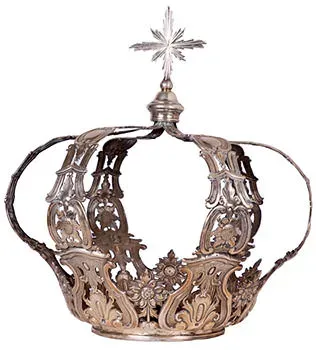 When
When ![]() amber was found with natural markings, it was very highly regarded. Some of these natural markings resembled the initials of prominent people and thus, were even more valuable. Friedrich Wilhelm I of Prussia paid a dealer a large sum of money for a piece of amber that had markings on it that resembled his initials. The same dealer owned another piece of amber, which had markings on it resembling the initials of Charles XII of Sweden. When the king died, this dealer regretted not having sold the stone to the him. Nathaniel Sendal, who told this story, consoled the dealer by telling him that the markings were not necessarily those of the king, but could resemble other letters that represented other people's initials. When Sendal gets to this part of the story, he says that this particular story is proof that these supposed initials on the amber had a lot to do with imagination, rather than the actual markings on the stone.
amber was found with natural markings, it was very highly regarded. Some of these natural markings resembled the initials of prominent people and thus, were even more valuable. Friedrich Wilhelm I of Prussia paid a dealer a large sum of money for a piece of amber that had markings on it that resembled his initials. The same dealer owned another piece of amber, which had markings on it resembling the initials of Charles XII of Sweden. When the king died, this dealer regretted not having sold the stone to the him. Nathaniel Sendal, who told this story, consoled the dealer by telling him that the markings were not necessarily those of the king, but could resemble other letters that represented other people's initials. When Sendal gets to this part of the story, he says that this particular story is proof that these supposed initials on the amber had a lot to do with imagination, rather than the actual markings on the stone.
 In olden times,
In olden times, ![]() amethyst was traditionally thought to cure drunkenness. However, in the 15th Century, many other attributes were believed to come from the stone. Amethyst was thought to have the power to make men particularly astute and sharp in business matters. The stone also supposedly had the power to control evil thoughts, and to increase intelligence. An amethyst worn on the person had a sobering effect, not only upon those who had drank too much but also upon those over-excited by love and passion. Lastly, amethyst protected soldiers from getting wounded and gave them the power to defeat their enemies. This alluring purple stone also helped hunters in their task of capturing wild animals. Lastly, amethyst protected its wearer from contagious diseases.
amethyst was traditionally thought to cure drunkenness. However, in the 15th Century, many other attributes were believed to come from the stone. Amethyst was thought to have the power to make men particularly astute and sharp in business matters. The stone also supposedly had the power to control evil thoughts, and to increase intelligence. An amethyst worn on the person had a sobering effect, not only upon those who had drank too much but also upon those over-excited by love and passion. Lastly, amethyst protected soldiers from getting wounded and gave them the power to defeat their enemies. This alluring purple stone also helped hunters in their task of capturing wild animals. Lastly, amethyst protected its wearer from contagious diseases.
 There is a beautiful legend about the
There is a beautiful legend about the ![]() amethyst, written in French poetry. The legend is about Bacchus- a god who was furious over some neglect he had experienced. He was so angry; he irrationally decided that the first person he passed on his train would be killed and eaten by his tigers. Fate then stepped in when the first person he passed turned out to be a woman named Amethyst. She was the purest, most beautiful maiden- and was about to worship the shrine of Diana. As Bacchus' tigers went after her, she was saved by the goddess Diana, who immediately protected her by instantly turning her into a pure white stone. Bacchus then recognized that what he had just witnessed was a miracle. He immediately regretted his cruelty and as an offering, poured grape juice over the petrified corpse of the maiden, thus turning the white stone into the beautiful purple color we know now as the beloved amethyst.
amethyst, written in French poetry. The legend is about Bacchus- a god who was furious over some neglect he had experienced. He was so angry; he irrationally decided that the first person he passed on his train would be killed and eaten by his tigers. Fate then stepped in when the first person he passed turned out to be a woman named Amethyst. She was the purest, most beautiful maiden- and was about to worship the shrine of Diana. As Bacchus' tigers went after her, she was saved by the goddess Diana, who immediately protected her by instantly turning her into a pure white stone. Bacchus then recognized that what he had just witnessed was a miracle. He immediately regretted his cruelty and as an offering, poured grape juice over the petrified corpse of the maiden, thus turning the white stone into the beautiful purple color we know now as the beloved amethyst.
 Based on the various descriptions of amethysts written by ancient writers, we can conclude that one kind of
Based on the various descriptions of amethysts written by ancient writers, we can conclude that one kind of ![]() amethyst was purple almandine or Indian
amethyst was purple almandine or Indian ![]() garnet. When water is poured into a container made of a reddish stone, the liquid appears to be the color of wine and can be drunk with immunity from detrimental effects. Because of this, amethyst was given the virtue of protecting its wearer from drunkenness.
garnet. When water is poured into a container made of a reddish stone, the liquid appears to be the color of wine and can be drunk with immunity from detrimental effects. Because of this, amethyst was given the virtue of protecting its wearer from drunkenness.
 In 1220, Arnoldus Saxo recited the virtues of the
In 1220, Arnoldus Saxo recited the virtues of the ![]() beryl. In his writings, he stated the stone helped the wearer in any fight, whether it be a physical fight or litigation. Beryl made the wearer unconquerable, and somehow, also likable. Beryl also cured the wearer of the disease of laziness and empowered the wearer with a sharp and quick intelligence. In a German translation of Thomas de Cantimpre's "De Proprietatibus Eerum,"" we read that the beryl also has the power to reawaken the love of married people."
beryl. In his writings, he stated the stone helped the wearer in any fight, whether it be a physical fight or litigation. Beryl made the wearer unconquerable, and somehow, also likable. Beryl also cured the wearer of the disease of laziness and empowered the wearer with a sharp and quick intelligence. In a German translation of Thomas de Cantimpre's "De Proprietatibus Eerum,"" we read that the beryl also has the power to reawaken the love of married people."
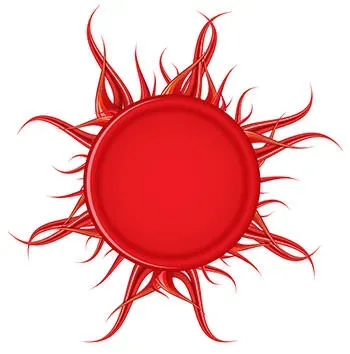 The bloodstone (also called heliotrope), was supposed to turn water into a liquid with a reddish hue that gave off beautiful reflections when the sun shone on it. Because of this phenomenon, a strange idea came about - that bloodstone had the power to actually turn the sun into a red color, as well as cause various powerful weather situations such as lightning, rain, thunder, and storms. The old treatise of Damigeron speaks of this, adding that bloodstone "announced future events by producing rain and by audible oracles."" Back then, witches most likely used bloodstone before proceeding with their magic, watching the sky and waiting until they saw a storm approaching. Then, these witches would use the sounds of the storm, the thunder, wind and lightning- to give answers to the question being asked to them about the future. Prophets were known to interpret various stormy sounds as articulate speech. Damigeron also wrote that bloodstone kept the wearer healthy, and gifted him with respect from others and the power of protection from any deception."
The bloodstone (also called heliotrope), was supposed to turn water into a liquid with a reddish hue that gave off beautiful reflections when the sun shone on it. Because of this phenomenon, a strange idea came about - that bloodstone had the power to actually turn the sun into a red color, as well as cause various powerful weather situations such as lightning, rain, thunder, and storms. The old treatise of Damigeron speaks of this, adding that bloodstone "announced future events by producing rain and by audible oracles."" Back then, witches most likely used bloodstone before proceeding with their magic, watching the sky and waiting until they saw a storm approaching. Then, these witches would use the sounds of the storm, the thunder, wind and lightning- to give answers to the question being asked to them about the future. Prophets were known to interpret various stormy sounds as articulate speech. Damigeron also wrote that bloodstone kept the wearer healthy, and gifted him with respect from others and the power of protection from any deception."
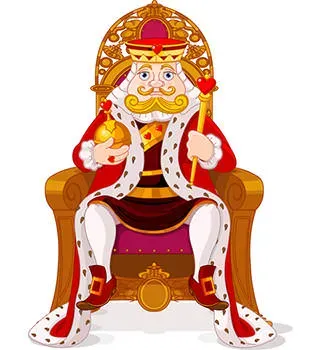 In the Leyden papyrus, bloodstone is praised as an amulet:
In the Leyden papyrus, bloodstone is praised as an amulet:
"The world has no greater thing; if any one have this with him he will be given whatever he asks for; it also assuages the wrath of kings and despots, and whatever the wearer says will be believed. Whoever bears this stone, which is a gem, and pronounces the name engraved upon it, will find all doors open, while bonds and stone walls will be rent asunder."""
 In olden times, the carbuncle was known to be a heart stimulant. It had so much power that whoever wore the stone became passionate and angry and were at risk of having strokes. The blood-red color of carbuncle made it a symbol of the divine sacrifice of Christ on the cross as well. Other religions have also used carbuncle for religious conceptions. The Koran says that the Fourth Heaven is composed of carbuncle. Furthermore, in many myths, the eyes of dragons are made of carbuncle.
In olden times, the carbuncle was known to be a heart stimulant. It had so much power that whoever wore the stone became passionate and angry and were at risk of having strokes. The blood-red color of carbuncle made it a symbol of the divine sacrifice of Christ on the cross as well. Other religions have also used carbuncle for religious conceptions. The Koran says that the Fourth Heaven is composed of carbuncle. Furthermore, in many myths, the eyes of dragons are made of carbuncle.
 In 1687, Enmphins wrote that a surgeon told him that he had seen a ruler on the island of Amboin with a carbuncle that was brought to him by a serpent. Supposedly, when this ruler was a child, his mother put him in a hammock hung between two trees. One day a snake crept up to him and placed a carbuncle on his body. As gratitude for this precious gift, the child's parents kept and cared for the serpent. Eventually, this particular carbuncle would up in the possession of a King of Siam.
In 1687, Enmphins wrote that a surgeon told him that he had seen a ruler on the island of Amboin with a carbuncle that was brought to him by a serpent. Supposedly, when this ruler was a child, his mother put him in a hammock hung between two trees. One day a snake crept up to him and placed a carbuncle on his body. As gratitude for this precious gift, the child's parents kept and cared for the serpent. Eventually, this particular carbuncle would up in the possession of a King of Siam.
 Carbuncle is a beautiful stone with a warm, yellow color that sometimes is so deep; it can appear red. The stone also shines so brightly; it can light up a dark room.
Carbuncle is a beautiful stone with a warm, yellow color that sometimes is so deep; it can appear red. The stone also shines so brightly; it can light up a dark room.
 The Lapidario of Alfonso X recommended wearing a carbuncle to those who have a soft voice and are shy. He stated that the warm color of the stone would provide the wearer with much-needed courage, thus enabling them to speak loudly and with pride. This notion goes along with the general idea that wearing any red stone produces stimulating effects to the wearer.
The Lapidario of Alfonso X recommended wearing a carbuncle to those who have a soft voice and are shy. He stated that the warm color of the stone would provide the wearer with much-needed courage, thus enabling them to speak loudly and with pride. This notion goes along with the general idea that wearing any red stone produces stimulating effects to the wearer.
 In the East, people are frightened of jealousy. They believe that if a person is jealous of another person for his wealth or health, eventually that wealthy and healthy person will lose those gifts. It is believed that the devil creates this feeling of jealousy that leads to misfortune. By wearing carnelian that is engraved with this prayer against jealousy, it is believed that other people's envy can do no harm.
In the East, people are frightened of jealousy. They believe that if a person is jealous of another person for his wealth or health, eventually that wealthy and healthy person will lose those gifts. It is believed that the devil creates this feeling of jealousy that leads to misfortune. By wearing carnelian that is engraved with this prayer against jealousy, it is believed that other people's envy can do no harm.
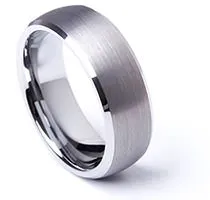 The prophet himself wore a silver ring set on his right pinky. It is because of this that carnelian gained such popularity as a talismanic stone among Mohammedan people. Jafar, who was one of the most well known Imam people, believed so strongly in the power of carnelian, that he declared, wearing the stone would result in the wearer having the power to satisfy all of his desires. Because of this, the name of one of the twelve Imams made up of Ali and his successors, is often engraved on carnelian.
The prophet himself wore a silver ring set on his right pinky. It is because of this that carnelian gained such popularity as a talismanic stone among Mohammedan people. Jafar, who was one of the most well known Imam people, believed so strongly in the power of carnelian, that he declared, wearing the stone would result in the wearer having the power to satisfy all of his desires. Because of this, the name of one of the twelve Imams made up of Ali and his successors, is often engraved on carnelian.
 In the seventeenth Century, an Armenian writer wrote that in India the lal or balas-
In the seventeenth Century, an Armenian writer wrote that in India the lal or balas-![]() ruby would banish all dark emotions and create joyous ones instead. The carnelian was powdered and drank in a potion for this purpose. Carnelian, like
ruby would banish all dark emotions and create joyous ones instead. The carnelian was powdered and drank in a potion for this purpose. Carnelian, like ![]() turquoise, was also thought to provide the wearer with protection from any injury from falling houses or walls. This writer stated that "no man who wore a carnelian was ever found in a collapsed house or beneath a fallen wall. """
turquoise, was also thought to provide the wearer with protection from any injury from falling houses or walls. This writer stated that "no man who wore a carnelian was ever found in a collapsed house or beneath a fallen wall. """
 In 1702, Gronelli wrote a genius though a slightly implausible explanation of the power
In 1702, Gronelli wrote a genius though a slightly implausible explanation of the power ![]() chalcedony has to drive away ghosts and visions of the night. Gronellli explained that the alkaline present in chalcedony caused the stone to have these powers. His theory was that the alkaline took away evil spirits that lived in people's eyes, thus curing the diseases which caused these disturbing visions. Although this explanation seems ridiculous, it does prove that the author did not believe in ghosts or the subjectiveness of this phenomenon.
chalcedony has to drive away ghosts and visions of the night. Gronellli explained that the alkaline present in chalcedony caused the stone to have these powers. His theory was that the alkaline took away evil spirits that lived in people's eyes, thus curing the diseases which caused these disturbing visions. Although this explanation seems ridiculous, it does prove that the author did not believe in ghosts or the subjectiveness of this phenomenon.
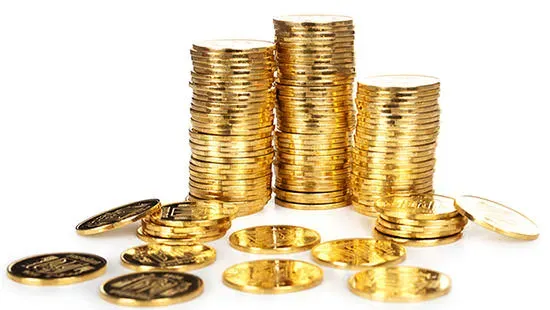 The cat's-eye variety of chrysoberyl, sometimes referred to simply as "precious cat's-eye,"" is used by the Ceylon natives as protection against evil spirits. In India, the cat's eye was treasured and quite expensive. De Boot stated that a cat's-eye was worth 90 gold pieces in Lusitania but was sold for 600 gold pieces in India. Some of the finest specimens of cat's eye come from Ceylon."
The cat's-eye variety of chrysoberyl, sometimes referred to simply as "precious cat's-eye,"" is used by the Ceylon natives as protection against evil spirits. In India, the cat's eye was treasured and quite expensive. De Boot stated that a cat's-eye was worth 90 gold pieces in Lusitania but was sold for 600 gold pieces in India. Some of the finest specimens of cat's eye come from Ceylon."
 Agatharcides wrote that the Serpent Isle in the Red Sea in Egypt was the source of
Agatharcides wrote that the Serpent Isle in the Red Sea in Egypt was the source of ![]() topaz. On Serpent Isle, the inhabitants were ordered to collect chrysolite and bring the stones to gem cutters to be polished by the kings. Diodorus Siculus wrote that jealous watchers kept their eyes on Serpent Isle and had orders to kill any unauthorized person who went anywhere close to the precious island. Chrysolite was not visible in the daylight, so all of the collecting went on at night when the stone was radiant and easily seen. The collectors would see the chrysolite, mark the spot where it was, and then go back the next day to collect it, and any other pieces around it.
topaz. On Serpent Isle, the inhabitants were ordered to collect chrysolite and bring the stones to gem cutters to be polished by the kings. Diodorus Siculus wrote that jealous watchers kept their eyes on Serpent Isle and had orders to kill any unauthorized person who went anywhere close to the precious island. Chrysolite was not visible in the daylight, so all of the collecting went on at night when the stone was radiant and easily seen. The collectors would see the chrysolite, mark the spot where it was, and then go back the next day to collect it, and any other pieces around it.
 Some of the finest pieces of chrysolites (periodots or olivines) come from Serpent Isle and other locations in Egypt. These particular stones wound up in famous cathedral treasures in Europe, and are usually referred to as emeralds. The most famous of these gems are called "the Three Magi"" and are found in the Cathedral at Cologne. Some of the Three Magi stones are incredibly almost two inches in length. Other notable pieces of chrysolite are found in New York, in the Morgan collection at the American Museum of Natural History, and in Chicago, in the Field Museum of Natural History."
Some of the finest pieces of chrysolites (periodots or olivines) come from Serpent Isle and other locations in Egypt. These particular stones wound up in famous cathedral treasures in Europe, and are usually referred to as emeralds. The most famous of these gems are called "the Three Magi"" and are found in the Cathedral at Cologne. Some of the Three Magi stones are incredibly almost two inches in length. Other notable pieces of chrysolite are found in New York, in the Morgan collection at the American Museum of Natural History, and in Chicago, in the Field Museum of Natural History."
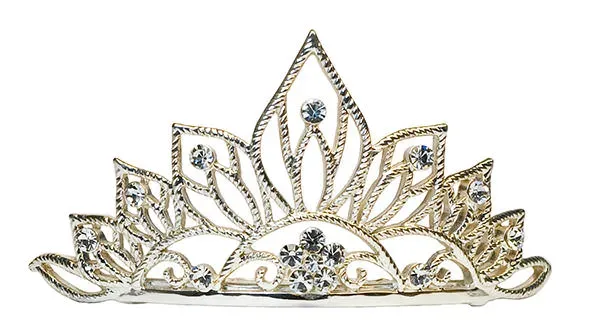 Pliny writes that the
Pliny writes that the ![]() topaz (chrysolite) got its name from the Island of Topazos in the Eed Sea. The first specimen of the stone was brought to Berenice, the mother of Ptolemy II, in Philadelphia. The stones were brought to her by the procurator Philemon. Supposedly, Philemon proudly owned a statue of his wife Arsinoe which was made from the chrysolite. If this is actually true, the gift given by Philemon to Berenice was most likely a mass of flourspar. More than three hundred years after the time of Pliny's writings, Epiphanius stated that the "topaz"" was set in the Theban queen's diadem."
topaz (chrysolite) got its name from the Island of Topazos in the Eed Sea. The first specimen of the stone was brought to Berenice, the mother of Ptolemy II, in Philadelphia. The stones were brought to her by the procurator Philemon. Supposedly, Philemon proudly owned a statue of his wife Arsinoe which was made from the chrysolite. If this is actually true, the gift given by Philemon to Berenice was most likely a mass of flourspar. More than three hundred years after the time of Pliny's writings, Epiphanius stated that the "topaz"" was set in the Theban queen's diadem."
 It has been said that chrysolite should be set in gold in order for it to have its full power. If however, the stone was used to protect the wearer from evil spirits, the stone had to be strung on the hair of an ass and then worn on the left arm.
It has been said that chrysolite should be set in gold in order for it to have its full power. If however, the stone was used to protect the wearer from evil spirits, the stone had to be strung on the hair of an ass and then worn on the left arm.
 Throughout time, chrysoprase has been known to have many positive attributes. Volmar wrote that if the stone were put in a thief's mouth who was supposed to be beheaded or hung, the thief would be given the power to escape. It was never known how exactly this was possible, but supposedly the thief would become invisible and thus, able to run. Opal was said to have the same power.
Throughout time, chrysoprase has been known to have many positive attributes. Volmar wrote that if the stone were put in a thief's mouth who was supposed to be beheaded or hung, the thief would be given the power to escape. It was never known how exactly this was possible, but supposedly the thief would become invisible and thus, able to run. Opal was said to have the same power.
 Albertus Magnus relates an odd story about a magic stone worn by Alexander the Great. In the story, Alexander wears a "prase"" in his girdle. One day, as he is about to bathe in the Euphrates, he takes off his girdle and lays it on the ground. A snake then comes and bites the stone off of the girdle and drops it in the river."
Albertus Magnus relates an odd story about a magic stone worn by Alexander the Great. In the story, Alexander wears a "prase"" in his girdle. One day, as he is about to bathe in the Euphrates, he takes off his girdle and lays it on the ground. A snake then comes and bites the stone off of the girdle and drops it in the river."
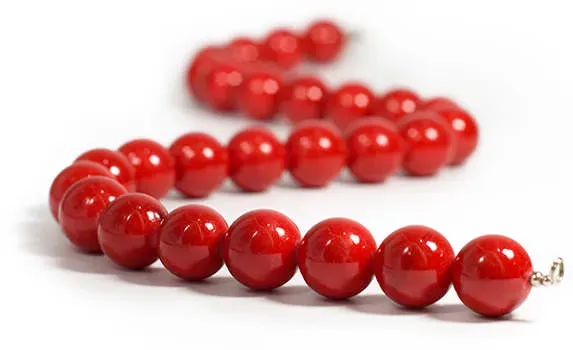 One who wears red or white coral is said to have the power to stop storms and cross wide rivers in safety. Coral was also known to stop the blood flow from a wound, provide wisdom, and cure madness.
One who wears red or white coral is said to have the power to stop storms and cross wide rivers in safety. Coral was also known to stop the blood flow from a wound, provide wisdom, and cure madness.
 For over twenty centuries, coral was classed as a precious stone. To be used as an amulet, coral had to be pure- meaning freshly gathered from the sea or the shore, and never worked on or engraved. If a piece of coral breaks, the pieces have no virtue or powers. The stone then loses its powers and the spirit living in the stone leaves.
For over twenty centuries, coral was classed as a precious stone. To be used as an amulet, coral had to be pure- meaning freshly gathered from the sea or the shore, and never worked on or engraved. If a piece of coral breaks, the pieces have no virtue or powers. The stone then loses its powers and the spirit living in the stone leaves.
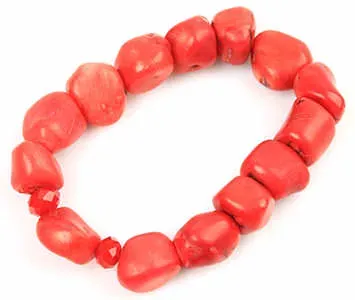 Peasant women hide their coral jewelry from their husbands as the stones become pale during certain seasons but then regain their bright color. The women think that the coral shares their indisposition with them. It is believed that a vital force animates coral, losing or gaining color according to specific conditions.
Peasant women hide their coral jewelry from their husbands as the stones become pale during certain seasons but then regain their bright color. The women think that the coral shares their indisposition with them. It is believed that a vital force animates coral, losing or gaining color according to specific conditions.
 The
The ![]() diamond goes with pearl like the sun goes with the moon, and we can refer to one as the "king gem"" the other as the ""queen gem."" The diamond, like an old knight, represents fearlessness and invincibility. The pearl, like a beautiful woman, represents modesty and purity. Therefore, it makes sense that the diamond should be presented to the pearl, and that pearls should go along with the diamond."
diamond goes with pearl like the sun goes with the moon, and we can refer to one as the "king gem"" the other as the ""queen gem."" The diamond, like an old knight, represents fearlessness and invincibility. The pearl, like a beautiful woman, represents modesty and purity. Therefore, it makes sense that the diamond should be presented to the pearl, and that pearls should go along with the diamond."
 The virtues ascribed to
The virtues ascribed to ![]() diamond are almost all directly traceable either to its hardness, transparency and purity. The diamond has always been thought to have the power to bring its wearer victory through the attributes of incredible strength and courage. Marbodus wrote that diamond was a magical stone of great power that got rid of night spirits. For the diamond to get rid of night spirits, it was to be set in gold and worn on the left arm. St. Hildegard wrote that the devil recognized the virtues of the diamond. The diamond was able to resist the devil's powers at night, and was, therefore, the devil's enemy. Reus wrote that the diamond was "a gem of reconciliation,"" between a man and wife. He believed the stone had the power to enhance their love."
diamond are almost all directly traceable either to its hardness, transparency and purity. The diamond has always been thought to have the power to bring its wearer victory through the attributes of incredible strength and courage. Marbodus wrote that diamond was a magical stone of great power that got rid of night spirits. For the diamond to get rid of night spirits, it was to be set in gold and worn on the left arm. St. Hildegard wrote that the devil recognized the virtues of the diamond. The diamond was able to resist the devil's powers at night, and was, therefore, the devil's enemy. Reus wrote that the diamond was "a gem of reconciliation,"" between a man and wife. He believed the stone had the power to enhance their love."
 Cardano takes a rather pessimistic view of the attributes of the
Cardano takes a rather pessimistic view of the attributes of the ![]() diamond. He says:
"It is believed to make the wearer unhappy; its effects therefore are the same upon the mind as that of the sun upon the eye, for the latter rather dims than strengthens the sight. It indeed renders fearless, but there is nothing that contributes more to our safety than prudence and fear; therefore it is better to fear."""
diamond. He says:
"It is believed to make the wearer unhappy; its effects therefore are the same upon the mind as that of the sun upon the eye, for the latter rather dims than strengthens the sight. It indeed renders fearless, but there is nothing that contributes more to our safety than prudence and fear; therefore it is better to fear."""
 Centuries ago, the
Centuries ago, the ![]() diamond was thought to have a connection with lightning. In an anonymous manuscript written in Italy in the fourteenth century, an author wrote that the diamond owed its origin to the thunderbolt. Beyond this piece of writing, however, there is nothing else to support this theory. In this mysterious author's writings, he also stated that the diamond melts when it thunders.
diamond was thought to have a connection with lightning. In an anonymous manuscript written in Italy in the fourteenth century, an author wrote that the diamond owed its origin to the thunderbolt. Beyond this piece of writing, however, there is nothing else to support this theory. In this mysterious author's writings, he also stated that the diamond melts when it thunders.
 The idea makes sense- that the same force that created the stone could dissolve it. In the fourteenth century, people did not yet know that the
The idea makes sense- that the same force that created the stone could dissolve it. In the fourteenth century, people did not yet know that the ![]() diamond can be entirely destroyed at high temperatures. The idea that electric currents would have an effect on the stone, therefore, had to have come from superstitious or poetic notions, not from any specific knowledge of the properties of the diamond.
diamond can be entirely destroyed at high temperatures. The idea that electric currents would have an effect on the stone, therefore, had to have come from superstitious or poetic notions, not from any specific knowledge of the properties of the diamond.
 In the Talmud, the high priest wore a beautiful gem which is believed to have been a
In the Talmud, the high priest wore a beautiful gem which is believed to have been a ![]() diamond. The stone had the power to show the guilt or innocence of any person accused of a crime. Supposedly the stone would be quite dull if the person was guilty, and would shine significantly if the individual was innocent. Sir John Mandeville wrote about this magic power: "It happens often that the good diamond loses its virtue by sin and for incontinence of him who bears it."""
diamond. The stone had the power to show the guilt or innocence of any person accused of a crime. Supposedly the stone would be quite dull if the person was guilty, and would shine significantly if the individual was innocent. Sir John Mandeville wrote about this magic power: "It happens often that the good diamond loses its virtue by sin and for incontinence of him who bears it."""
 Hindus put diamonds in classes according to the four castes. The Brahmin
Hindus put diamonds in classes according to the four castes. The Brahmin ![]() diamond brought its wearer good luck, fortune, power, and friends. The Kshatriya diamond gave the wearer the power to prevent old age. The Vaisya diamond gave the wearer great success. And the Sudra diamond provided the wearer with all around good fortune. However in a treatise about gemstones written by Buddhabhatta, he writes, "A diamond, a part of which is the color of blood or spotted with red, would quickly bring death to the wearer, even if he were the Master of Death."""
diamond brought its wearer good luck, fortune, power, and friends. The Kshatriya diamond gave the wearer the power to prevent old age. The Vaisya diamond gave the wearer great success. And the Sudra diamond provided the wearer with all around good fortune. However in a treatise about gemstones written by Buddhabhatta, he writes, "A diamond, a part of which is the color of blood or spotted with red, would quickly bring death to the wearer, even if he were the Master of Death."""
 The Arabians, Persians, and Egyptians, all believe that the
The Arabians, Persians, and Egyptians, all believe that the ![]() diamond brings the wearer good fortune. In the fourteenth century, a mystic named Kabbi Benoni, wrote that the diamond causes the wearer to sleep walk. As a talisman, he wrote that the stone attracts the planetary influences so much so, that its wearer becomes invincible. He went on to say that the stone creates a state of total spiritual ecstasy. Pierre de Boniface, an alchemist in the same century, wrote that the diamond had the power to make its wearer invisible.
diamond brings the wearer good fortune. In the fourteenth century, a mystic named Kabbi Benoni, wrote that the diamond causes the wearer to sleep walk. As a talisman, he wrote that the stone attracts the planetary influences so much so, that its wearer becomes invincible. He went on to say that the stone creates a state of total spiritual ecstasy. Pierre de Boniface, an alchemist in the same century, wrote that the diamond had the power to make its wearer invisible.
 Another attribute, a strange one, attributes reproductive powers to the
Another attribute, a strange one, attributes reproductive powers to the ![]() diamond. Sir John Mandeville wrote about this topic:
"They grow together, male and female, and are nourished by the dew of heaven; and they engender commonly, and bring forth small children that multiply and grow all the year. I have often times tried the experiment that if a man keep them with a little of the rock, and water them with May dew often, they shall grow every year and the small will grow great."""
diamond. Sir John Mandeville wrote about this topic:
"They grow together, male and female, and are nourished by the dew of heaven; and they engender commonly, and bring forth small children that multiply and grow all the year. I have often times tried the experiment that if a man keep them with a little of the rock, and water them with May dew often, they shall grow every year and the small will grow great."""
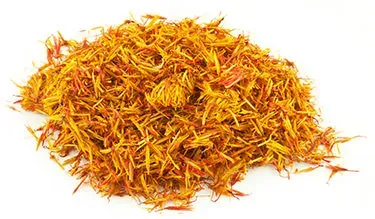 Buddhabhatta's ancient Hindu gem treatise states that the Brahmin's
Buddhabhatta's ancient Hindu gem treatise states that the Brahmin's ![]() diamond should have a white color like that of a rock crystal or shell. The Kshatriya's diamond should have a brown color like that of a hare. The Vaisya's diamond should have a lovely violet color, like that of the kadali flower, and the Sudra's diamond should have the sheen of a polished blade. Two kinds of colored diamonds were assigned to kings only- diamonds that were bright yellow like saffron and bright red like coral. Other colored diamonds were set in royal jewels, but these two colors of diamonds were only allowed to be worn by royalty.
diamond should have a white color like that of a rock crystal or shell. The Kshatriya's diamond should have a brown color like that of a hare. The Vaisya's diamond should have a lovely violet color, like that of the kadali flower, and the Sudra's diamond should have the sheen of a polished blade. Two kinds of colored diamonds were assigned to kings only- diamonds that were bright yellow like saffron and bright red like coral. Other colored diamonds were set in royal jewels, but these two colors of diamonds were only allowed to be worn by royalty.
 A typical
A typical ![]() diamond is described in Hindu writings as, "pure, without stain, with pronounced and sharp edges, of a beautiful shade, light, with well-formed facets, without defects, illuminating space with its fire and with the reflection of the rainbow, a diamond of this kind is not easy to find in the earth."""
diamond is described in Hindu writings as, "pure, without stain, with pronounced and sharp edges, of a beautiful shade, light, with well-formed facets, without defects, illuminating space with its fire and with the reflection of the rainbow, a diamond of this kind is not easy to find in the earth."""
 The
The ![]() diamond's talismanic power was supposedly lost if the stone was bought by its wearer. The wearer would have to receive the diamond as a gift for it to retain its power. The same belief is held for
diamond's talismanic power was supposedly lost if the stone was bought by its wearer. The wearer would have to receive the diamond as a gift for it to retain its power. The same belief is held for ![]() turquoise as well. Superstition says that the spirit living inside turquoise would get offended by the idea of being bought and sold, and would therefore leave the stone, leaving it as nothing but a spiritually empty piece of matter. If either the diamond or turquoise were given to the wearer as
a pledge of love or friendship however, the spirit would transfer its goodness from one wearer to the other.
turquoise as well. Superstition says that the spirit living inside turquoise would get offended by the idea of being bought and sold, and would therefore leave the stone, leaving it as nothing but a spiritually empty piece of matter. If either the diamond or turquoise were given to the wearer as
a pledge of love or friendship however, the spirit would transfer its goodness from one wearer to the other.
 The Talmud shows us that Jewish rabbis sometimes tried to make their tiring discussions of religion and rituals more exciting by telling stories to each other. One such story was about the
The Talmud shows us that Jewish rabbis sometimes tried to make their tiring discussions of religion and rituals more exciting by telling stories to each other. One such story was about the ![]() diamond, and how on the one hand its superstitions were utterly improbable, yet on the other hand, the magical virtues of the stone were wonderful.
diamond, and how on the one hand its superstitions were utterly improbable, yet on the other hand, the magical virtues of the stone were wonderful.